The use of drugs by teenagers is a growing problem in today’s society. Many teens turn to drugs as a way to cope with the pressures of school, family, and friends. The most commonly used drug by teens is marijuana. Marijuana is easily accessible and is often used as a way to escape from reality. Other drugs used by teens include alcohol, cigarettes, and prescription drugs. The use of these drugs can lead to serious health problems, addiction, and even death.
What Is The Number One Drug Used by Teens?
Marijuana is the most commonly used illegal drug in the United States. The number one drug used by teens is marijuana. Marijuana is a mind-altering drug that can be smoked, eaten, or vaporized. It can also be used to make other drugs, like hashish and hash oil.
Top 10 Most Common Drugs Used By Teens
Marijuana is the most commonly used drug by teens, followed by alcohol, tobacco, and e-cigarettes. These drugs are easily accessible and often used by teens without parental supervision. The most common drugs used by teens are marijuana, alcohol, tobacco, and e-cigarettes. All of these drugs are harmful to the developing brain and can lead to addiction.
Marijuana
Marijuana is the most commonly used drug by teenagers in the United States. According to the National Institute on Drug Abuse, about 1 in 3 high school seniors report using marijuana in the past year. Although marijuana use has been declining among 8th and 10th graders in recent years, it remains the most popular drug used by teenagers.
A typical joint costs between $2 and $5. There are a number of reasons why marijuana is so popular among teenagers. Unlike alcohol or other drugs, marijuana is not associated with violent behavior or addiction. Marijuana is often grown locally, and it can be purchased from dealers or friends. First, it is relatively easy to obtain. Finally, marijuana is considered to be a relatively safe drug. Second, marijuana is relatively inexpensive.
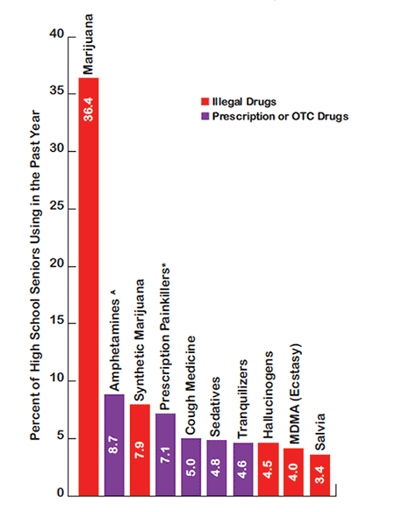
Finally, marijuana use can increase the risk of developing psychotic disorders, such as schizophrenia. Despite the perception that marijuana is a safe drug, it can have a number of negative effects on teenagers. For example, marijuana use has been linked to poor school performance, memory problems, and difficulty concentrating. In addition, marijuana use can lead to anxiety and depression.
Prescription Stimulants
Prescription stimulants are a class of drugs that are used to treat conditions like attention deficit hyperactivity disorder (ADHD) and narcolepsy. They work by increasing the activity of certain chemicals in the brain, which can improve focus and concentration.
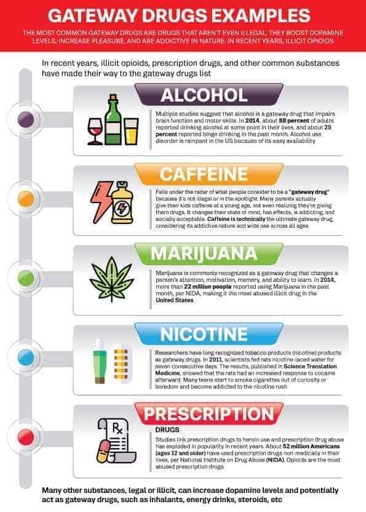
When taken in large doses or without a prescription, stimulants can produce a “high” that is similar to the effects of cocaine. This can lead to problems with addiction and abuse. While these drugs can be effective at treating the symptoms of ADHD and narcolepsy, they can also be abused.
Spice/K2 (Synthetic Marijuana)
Spice/K2 is especially popular among teens, who may be attracted to its “legal” status and the fact that it can be easily purchased online or in convenience stores. Spice/K2 (Synthetic Marijuana) is a man-made drug that is often marketed as a “legal” alternative to marijuana. However, the risks far outweigh the rewards, and parents should be aware of the dangers of this drug. However, Spice/K2 is much more potent and dangerous than marijuana, and has been linked to serious health problems and even death.
Crystal Meth
It is most commonly used as a party drug, and its effects can include increased energy and alertness, euphoria, and increased sex drive. Crystal meth is a powerful and addictive stimulant that is closely related to amphetamines. It is one of the most dangerous drugs used by teens, and its use can lead to addiction and serious health problems. Crystal meth can also lead to paranoia, aggression, and psychotic behavior.
Heroin
Heroin can be snorted, smoked, or injected, and its effects typically last for 3-5 hours. Long-term effects of heroin use can include addiction, liver and kidney disease, collapsed veins, and an increased risk of contracting HIV and other diseases. Short-term effects of heroin include a sense of euphoria, increased alertness, and decreased pain. However, heroin also has a number of negative short-term effects, including nausea, vomiting, constipation, and drowsiness. It is typically sold as a white or brown powder or as a black tar-like substance. Heroin is a highly addictive opioid drug that is derived from the poppy plant.
Hallucinogens
Hallucinogens are a type of drug that can cause users to see, hear, or feel things that are not really there. However, there are a variety of other drugs that teens may use, including hallucinogens. While many teens experiment with drugs, the most commonly used drug is alcohol. While these drugs may be legal in some states, they can still be dangerous. teens should be aware of the risks of using any type of drug, including hallucinogens. Some common hallucinogens include LSD, magic mushrooms, and mescaline.
MDMA / Ecstasy
It can also be addictive. It is a synthetic drug that has both stimulant and hallucinogenic effects. MDMA can cause side effects such as anxiety, paranoia, and depression. MDMA, also known as ecstasy, is the number one drug used by teens. It is often used at clubs, concerts, and parties.
DXM (Cough Syrup)
It is also abused as a recreational drug. According to a recent study, the number one drug used by teens is DXM (cough syrup). It can also be dangerous when mixed with other drugs or alcohol. When taken in large doses, DXM can cause hallucinations and out-of-body experiences. DXM is a common ingredient in over-the-counter cough medicines.
Inhalants
Inhalants can be found in many household products, such as cleaning supplies, aerosol cans, and spray paints. Inhalants are one of the most commonly used drugs by teenagers. When inhaled, they produce a short-lived high that can lead to feelings of euphoria and relaxation. They are easily accessible and often used as a way to cope with stress or boredom. They can cause serious health problems, including brain damage, and even death. However, inhalants can also be very dangerous.
OxyContin & Vicodin (Prescription Painkillers)
It’s important for parents and guardians to be aware of the signs of prescription painkiller abuse and to talk to their teens about the dangers of these drugs. Teens may abuse prescription painkillers to get high, relieve pain, or improve their performance in school or sports. Prescription painkillers like OxyContin and Vicodin are among the most commonly abused drugs by teens. Some teens may be prescribed these drugs for legitimate medical reasons, but they can still be misused. These drugs are highly addictive and can have serious consequences, including overdose and death.
The Effects of Drugs On Youth & Teens
Drug use can have a number of negative effects on young people, including physical and mental health problems, social and behavioral problems, and even death. Some of the most commonly used drugs by youth and teens include alcohol, tobacco, marijuana, and prescription and over-the-counter drugs. The use of drugs by youth and teens is a growing problem in today’s society. Each of these drugs can have different effects on young people, depending on a number of factors, including the person’s age, health, and the amount of the drug used.
The Effect of Alcohol On Teens
The effects of alcohol on teens can be both short-term and long-term. Long-term effects can include liver damage, brain damage, and an increased risk for developing cancer. Short-term effects can include impaired judgment, coordination, and reflexes; increased risk-taking behavior; and possible alcohol poisoning.
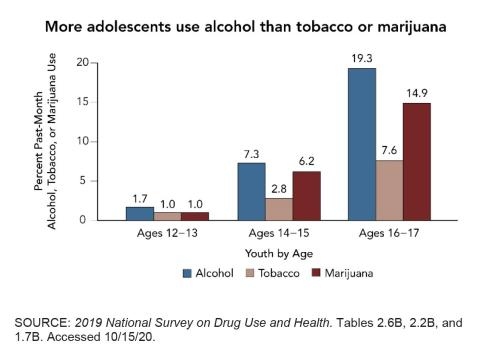
Teens who drink alcohol are also more likely to engage in other risky behaviors, such as unprotected sex, driving under the influence, and using other drugs.
Alcohol use can also lead to academic problems. Teens who drink are more likely to miss school, get lower grades, and be more likely to drop out of school.
They are more likely to become addicted to alcohol and to continue drinking into adulthood. Teens who drink are also more likely to develop problems with alcohol later in life.
If you are a teen who is drinking, seek help from a trusted adult or a treatment program. If you know a teen who is drinking, talk to them about the risks and encourage them to stop. The best way to prevent the negative effects of alcohol on teens is to prevent them from drinking in the first place.
The Effect of Tobacco & Vaping On Teens
Tobacco use among high school students has been declining for many years, but vaping has been on the rise. This is a significant increase from the 1 in 10 who reported using them in 2017. In 2018, 1 in 5 high school students reported using e-cigarettes in the past 30 days. Tobacco and vaping have had a profound effect on teenagers in recent years.
However, there is still a lot we don’t know about the long-term effects of vaping. We do know that it is not safe for teens to be using tobacco or e-cigarettes in any form. Vaping is especially popular among teenagers because it is seen as a safer alternative to smoking.
Tobacco and e-cigarette use can have a number of negative effects on teenagers. These include:
-Increased risk of lung cancer
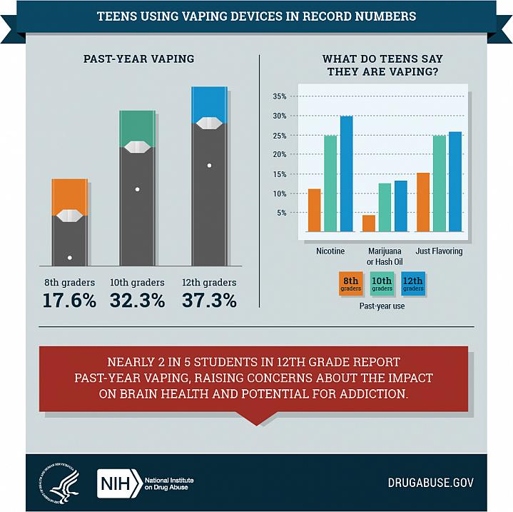
-Increased risk of other cancers
-Increased risk of heart disease
-Increased risk of stroke
-Increased risk of respiratory problems
-Increased risk of addiction
-Impaired brain development
-Impaired lung function
-Decreased life expectancy
This means that they are more susceptible to the harmful effects of tobacco and vaping. It’s important to remember that teenagers are still developing and their bodies are not yet fully mature. These are just some of the potential health risks associated with tobacco and vaping.
You can also talk to your doctor or another healthcare provider about quitting. There are a number of resources available to help you quit. If you are a teenager who uses tobacco or e-cigarettes, we urge you to stop.
The Effect of Marijuana On Teens
While marijuana use has been declining among high school students in recent years, it is still used by a significant number of teens. Marijuana is the most commonly used drug by teens in the United States.
There is a great deal of debate over the effects of marijuana on teens. Some believe that it can be harmful, while others believe that it is not as harmful as other drugs.
Marijuana can certainly be harmful to teens. It can also interfere with their memory and learning. It can impair their judgment and decision-making, and lead to risky behaviors.
They are also more likely to develop psychotic symptoms, such as paranoia and delusions. Teens who use marijuana are also more likely to experience anxiety and depression.
Marijuana use can also lead to addiction. Teens who are addicted to marijuana may have difficulty stopping their use, even when it is causing problems in their lives.
Despite the potential risks, some teens believe that marijuana is not harmful. They may believe that it is not as addictive as other drugs, or that it is not as harmful as alcohol or cigarettes.

They should make sure that their teens are aware of the potential consequences of using marijuana. It is important for parents to talk to their teens about the risks of marijuana use.
The Effect of Inhalants On Teens
Inhalants can have a number of negative effects on teens, including: Inhalants are one of the most commonly used drugs by teenagers. They are easily accessible and often used as a way to escape from reality.
– Short-term effects such as dizziness, lightheadedness, and loss of coordination
– Long-term effects such as brain damage, liver damage, and kidney damage
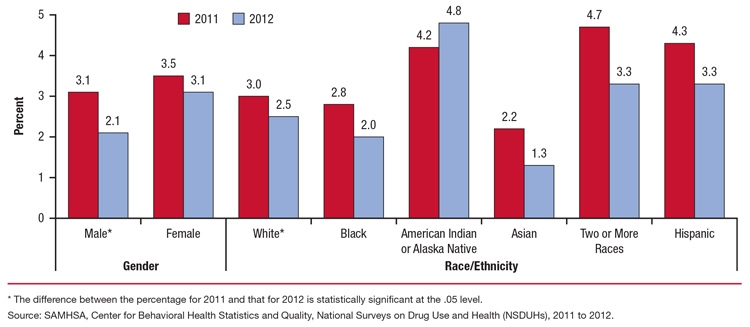
– Increased risk of developing cancer
– Death
Inhalants are particularly dangerous because they are often used in combination with other drugs or alcohol. If you or someone you know is using inhalants, it is important to get help as soon as possible. This can lead to even more serious health consequences.
The Effect of Cough Syrup (DXM) On Teens
Dextromethorphan, the active ingredient in cough syrup, is a safe and effective cough suppressant when used as directed. Cough syrup is one of the most commonly abused drugs by teenagers. However, when taken in large doses, dextromethorphan can produce psychoactive effects similar to those of other hallucinogenic drugs.
These effects can last for several hours, and can be extremely dangerous. In some cases, teens who abuse cough syrup have ended up in the hospital with serious health complications, including seizures and respiratory failure. Teens who abuse cough syrup may experience visual and auditory hallucinations, as well as feelings of euphoria, dissociation, and paranoia.
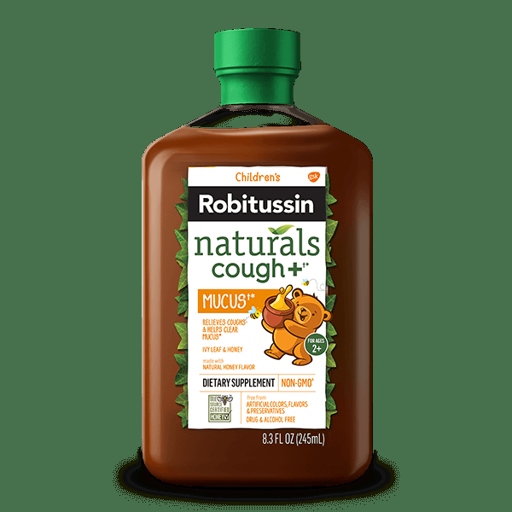
If you suspect that your teen is abusing cough syrup, or any other drug, it’s important to get them help as soon as possible. There are many resources available to help teens overcome addiction, and get their lives back on track. Cough syrup abuse is a serious problem, and one that parents need to be aware of.
The Effect of OxyContin & Vicodin On Teens
Teens who abuse these drugs may suffer from liver damage, kidney damage, and respiratory problems. These drugs are highly addictive and can lead to serious health problems. In addition, teens who abuse these drugs may have difficulty concentrating and may have problems with memory and learning. They may also experience mood swings, anxiety, and depression. The use of OxyContin and Vicodin by teens is a growing problem.
The Effect of Spice (K2) On Teens
It is typically sold as a herbal incense or “potpourri” and can be smoked or ingested. Spice is often marketed as a “legal high” and is easily accessible, especially to teens. Spice, also known as K2, is a synthetic cannabinoid that is often used as a recreational drug.
Because the effects of Spice are not well-understood, it can be very dangerous, especially for teens. The effects of Spice on teens are not well-known, but it is thought to be similar to marijuana. Spice can cause relaxation, altered perception, and euphoria. It can also cause anxiety, paranoia, and hallucinations.
In addition, because Spice is often sold as an incense or potpourri, it is often laced with other chemicals, which can be dangerous. Teens who use Spice may be more likely to experience negative effects, such as psychotic episodes, than adults.
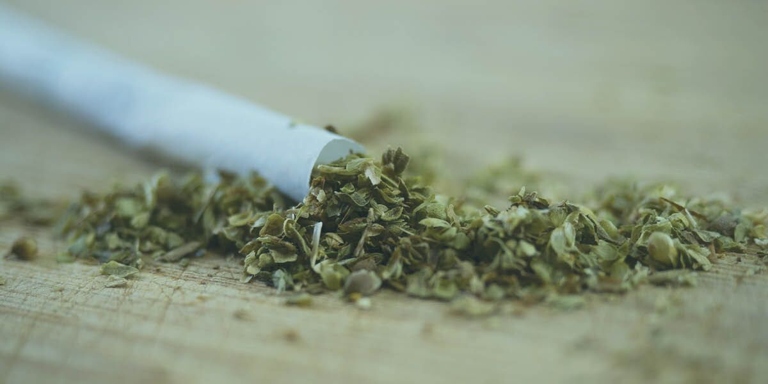
Because of the potential dangers of Spice, it is important for parents to talk to their teens about the risks of using this drug.
The Effect of Adderall & Ritalin On Teens
Adderall and Ritalin are two of the most commonly prescribed medications for attention deficit hyperactivity disorder (ADHD). According to the National Institute on Drug Abuse, about 1 in 10 high school students have used these medications non-medically, which means without a prescription or for reasons other than what they were prescribed for.
Teens may abuse Adderall and Ritalin because they believe that these medications will help them improve their grades or performance in sports. Some teens may also abuse these drugs to lose weight or to get high.
When taken as prescribed, they can help people with ADHD improve their focus and concentration. However, when misused, these drugs can have serious consequences. Adderall and Ritalin are central nervous system stimulants.
Teens who abuse Adderall and Ritalin may experience a number of side effects, including:
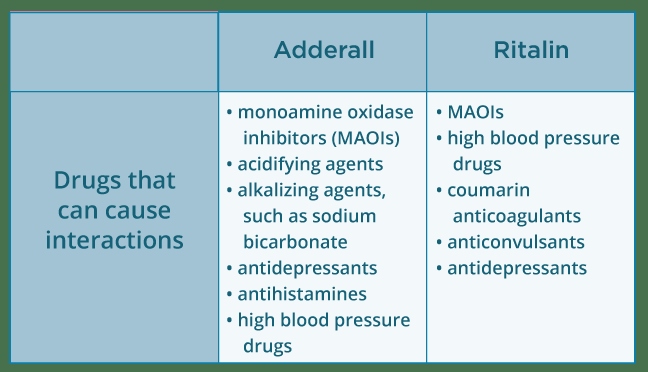
-Anxiety
-Paranoia
-Aggression
-Hallucinations
-Cardiac problems
-Seizures
-High blood pressure
-Kidney damage
-Psychosis
Adderall and Ritalin abuse can also lead to addiction. Teens who are addicted to these drugs may have trouble stopping their use even when they experience negative consequences, such as poor grades or problems with friends and family.
There are a number of treatment options available, including therapy, medication, and support groups. If you or someone you know is abusing Adderall or Ritalin, it’s important to get help as soon as possible.
The Effect of MDMA On Teens
It can also cause anxiety, paranoia, and depression. MDMA is a stimulant and hallucinogen. It causes feelings of euphoria, increased energy, and empathy. It is often used at clubs and music festivals. MDMA, also known as Ecstasy, is a popular party drug among teenagers. Teens who use MDMA are at risk for developing addiction, as well as other health problems.
The Effect of Heroin On Teens
Teens who use heroin are also at increased risk for contracting HIV and other diseases. This illegal drug is highly addictive and can lead to serious health problems, including death. Heroin use among teens often leads to other criminal activities, such as theft, to get money to buy the drug. The use of heroin by teens is a major problem.
Signs Your Teen Is Using Drugs
Signs Your Teen Is Using Drugs
If your teen is using drugs, they may: It can be difficult to tell if your teen is using drugs, but there are some signs you can look for.
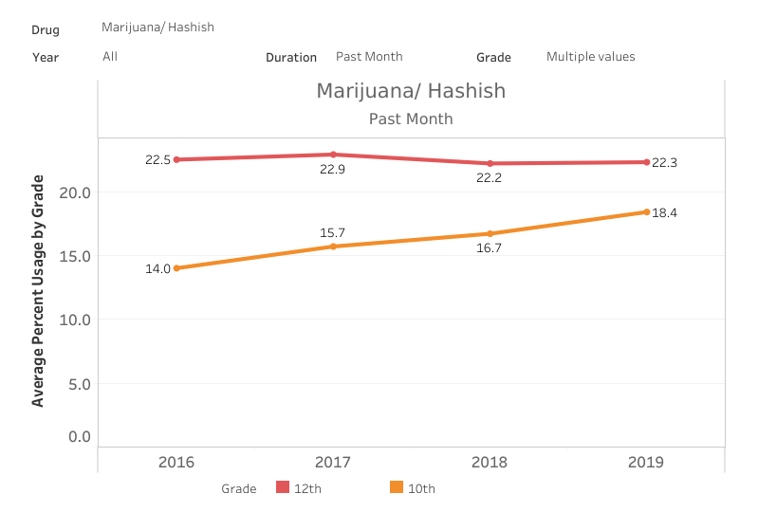
– Have changes in their mood or behavior
– Have new friends who are involved in drugs
– Start doing poorly in school
– Lose interest in activities they used to enjoy
– Be secretive and withdraw from the family
– Have changes in their appearance, such as bloodshot eyes or weight loss
If they are, they need your support to get help. If you suspect your teen is using drugs, talk to them about it.
Why do teens use drugs?
Some teens use drugs to fit in with their friends or to rebel against their parents. Others use drugs to cope with stress or to escape from their problems. Teens who use drugs are more likely to get into trouble at school, at home, and with the law. Some teens also use drugs because they are curious or because they think it will make them feel better. There are many reasons why teens use drugs. They are also more likely to have health problems, to get addicted to drugs, and to overdose. Whatever the reason, using drugs can have serious consequences.
Frequently Asked Questions
1. What is the number one drug used by teens?
The number one drug used by teens is marijuana. Marijuana is a mind-altering drug that can cause problems with memory, learning, and judgment.
2. How do teens get marijuana?
Teens can get marijuana from friends, family members, or dealers. They may also grow their own marijuana plants.
3. What are the effects of marijuana on the brain?
Marijuana affects the brain by causing changes in mood, perception, and behavior. It can also impair memory and learning.
4. What are the effects of marijuana on the body?
Marijuana can cause sleepiness and impaired coordination. It can also increase heart rate and decrease blood pressure.
5. Is marijuana addictive?
Yes, marijuana is addictive. People who use marijuana may develop a dependence on the drug.
Final thoughts
According to the National Institute on Drug Abuse, the number one drug used by teens is alcohol. Alcohol is easily accessible and is often used by teens to cope with stress or peer pressure. Alcohol use can lead to addiction, health problems, and even death. It is important for parents to talk to their teens about the risks of alcohol use and to provide support and guidance.